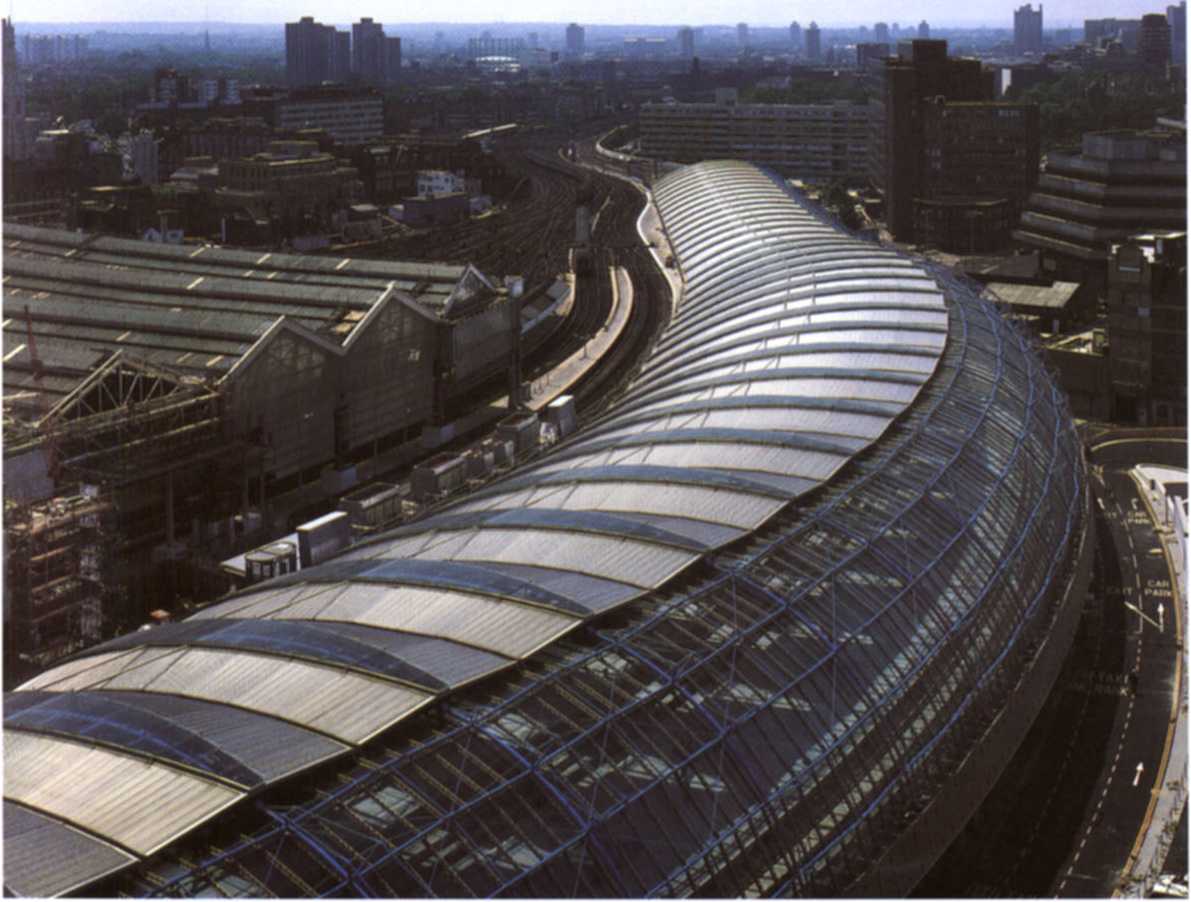New Forms Taschen 053


that his blighted northern city was included at the last moment in the route to London in the place of Amiens. Suddenly, Lille was to find itself only one hour from Paris by train, and two hours from London. Lille-Europe would become an obligat-ory point of passage for some 30 million passengers a year. Significantly, Margaret Thatcher and Franęois Mitterrand signed the agreement to build the TCV-tunnel link m the Lille mayor's Office in January 1986. Rem Koolhaas (OMA) was chosen to oversee the development of the multi-use Euralille complex, combining the train station, a 155,000 m2 commercial center, two Office towers, and the 50,000 m2 Grand Palais convention center (see the Introduction), in November 1988. Koolhaas, who has become a true “star" of international architecture, was quick to grasp the significance of this massive urban development project, which was in fact an mtegral part of a system of transportation. "The underlying notion," he said, "is that you don't look at distance anymore, but at the time it takes to go from one place to another. 60 to 70 million people now live within 90 minutes of each other. By the sheer fluke of geography, Lille is the transplanted heart of a virtual community." Rather than being based on morę traditional definitions of place, the architecture and development of the futurę could thus depend on the location of nodal points in the web being created by new forms of transport and Communications.
Page$ S8/59 Nicholas Grimshaw Waterloo International Terminal London, Great Britain, 1990-93
Snaking its way through a rather unpleasant section of London not far from the South Bank complex. which indudes the Hayward Gallery, the form of the new Waterloo Terminal was in part dictated by technical factors such as the turntng radius of Eurostar trarns. Bright and airy, especially on the tram platforms themselves. Waterloo providcs a fitting complement to the new French stations on the same linę.
8 Uroan Strategie*
Wyszukiwarka
Podobne podstrony:
New Forms Taschen 022 Pages24/25 Alessandro Mendini ef a/. Groninger Museum Groningen, The Neth
New Forms Taschen 008 One of Frank O. Gehry s morę successful buildings is his Vitra Design Museum i
New Forms Taschen 037 emphasized again here that aside from France, The Netherlands may be one of th
New Forms Taschen 118 1 _L „L- the modern purist tenants, and he may be right about that
New Forms Taschen 119 ern artists to touch fundamenta! elements that are still very much part of eve
New Forms Taschen 158 Cuba, in January 1995 gave rise to his Havana Project, which is a proposal for
New Forms Taschen 165 Bottom lefr Hiroshi Teshigahara Tca Ceremony Numazu, Japan. 1992&nbs
New Forms Taschen 166 A finał, almost amusing example is that of Philippe Starck s, "La Flamme,
New Forms Taschen 178 natural phenomena. I like the idea that architeaure comes f rom some sort of m
New Forms Taschen 037 emphasized again here that aside from France, The Netherlands may be one of th
więcej podobnych podstron